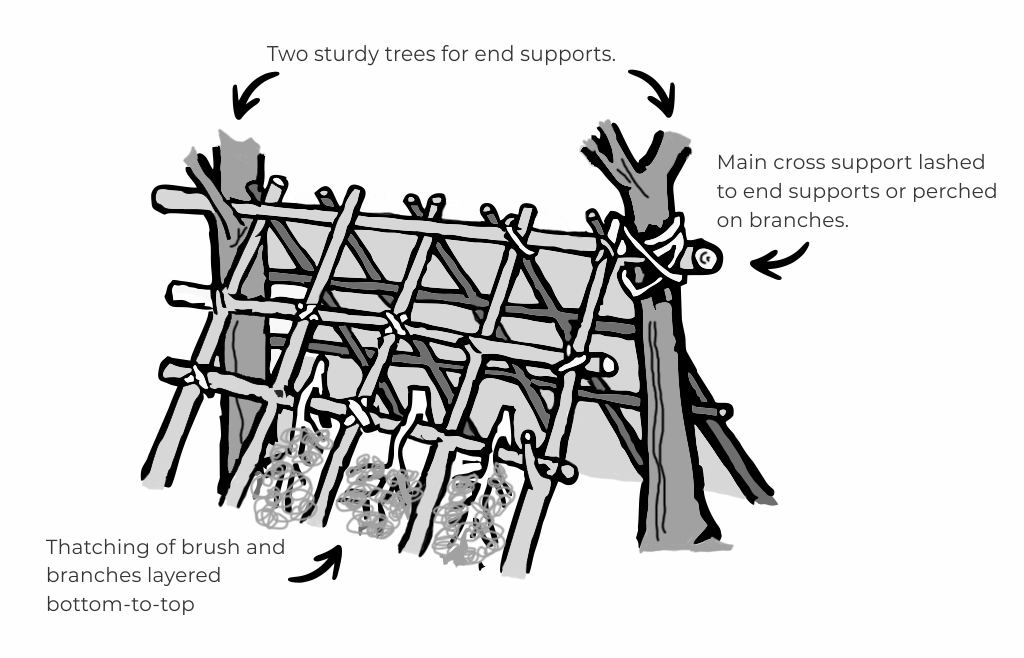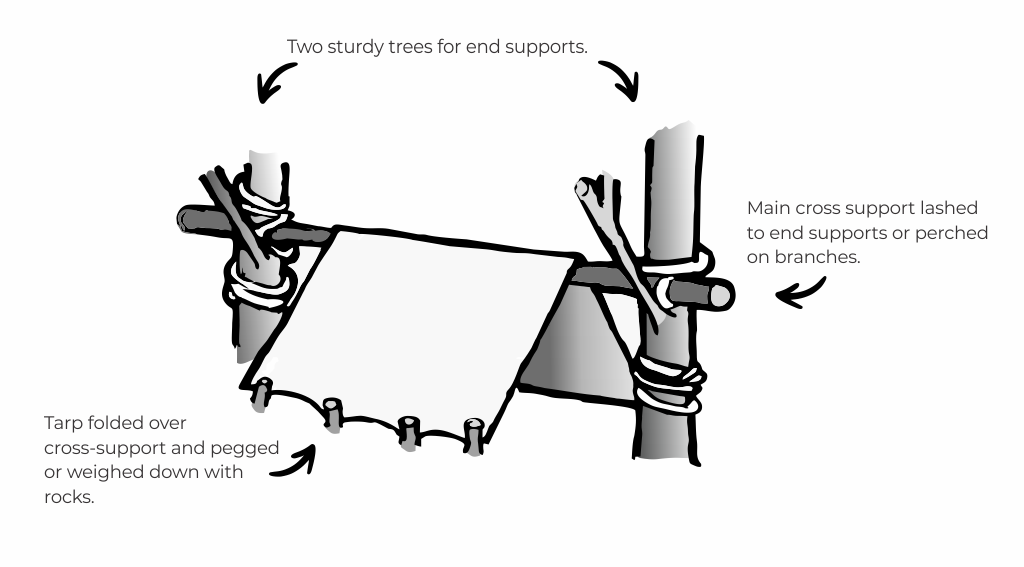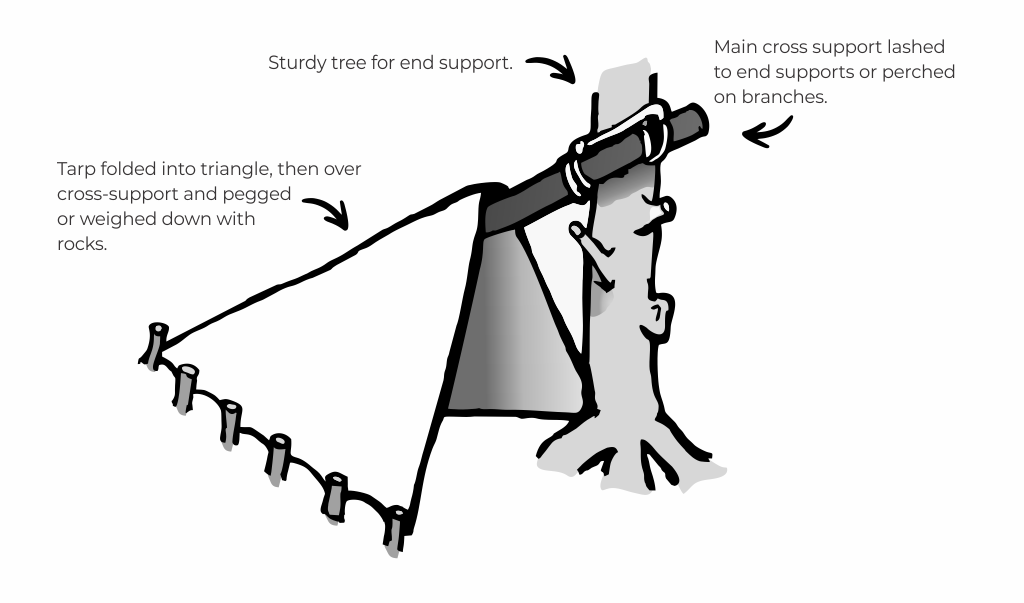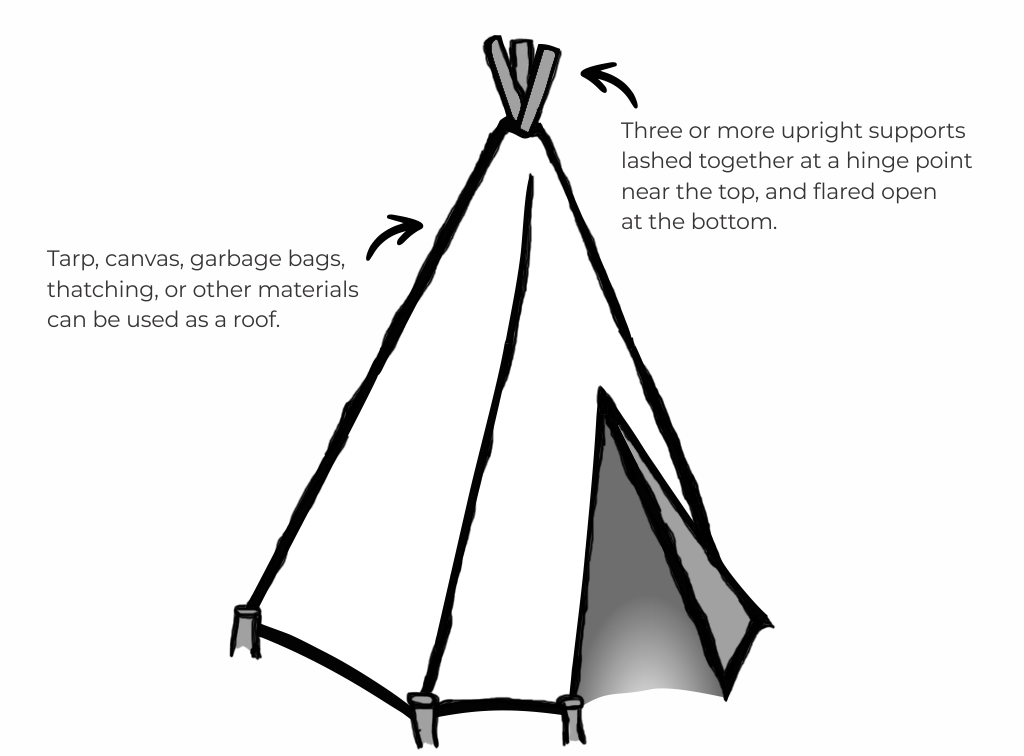Shelter
Shelter
Shelter should be considered one of the top priorities in most survival situations. Severe weather and extreme temperatures can be deadly within a few hours if a person remains exposed to the elements. Not all shelters will be the same, however. Each is a product of the environment they are used in, and the materials available.
Ingenuity and creativity will go a long way when constructing a survival shelter. Natural materials and features of the terrain can all be used in the construction of a shelter; sticks and branches can be used as supports while brush, leaves, and dirt can be used for insulation. In winter, even snow can be used to construct the ideal shelter, providing insulation and protection.
One of the most important factors in building a shelter is simplicity. Do not make the construction of shelter a complicated process that expends excessive calories, monopolizes your gear, and consumes excessive time. Plan ahead, pick your site, gather materials, then build.
Protection from the Elements
The ideal shelter will provide:
Protection from above
- Precipitation
- Wind
- Sun
- Heat loss
Protection from below
- Heat loss
- Bugs
- Moisture
Structures
The 4 most common shelter structures are the Lean-to, A-Frame, Tipi, and the Dome. These can all be constructed using the most basic of materials and in a relatively short time. Outdoor Education classes are encouraged to practice building various types of shelters in a controlled environment before venturing into the wilderness.
Lean-To

A-Frame

Single-Pole Tipi

Tipi

Dome

Last revised on 29 April, 2020.